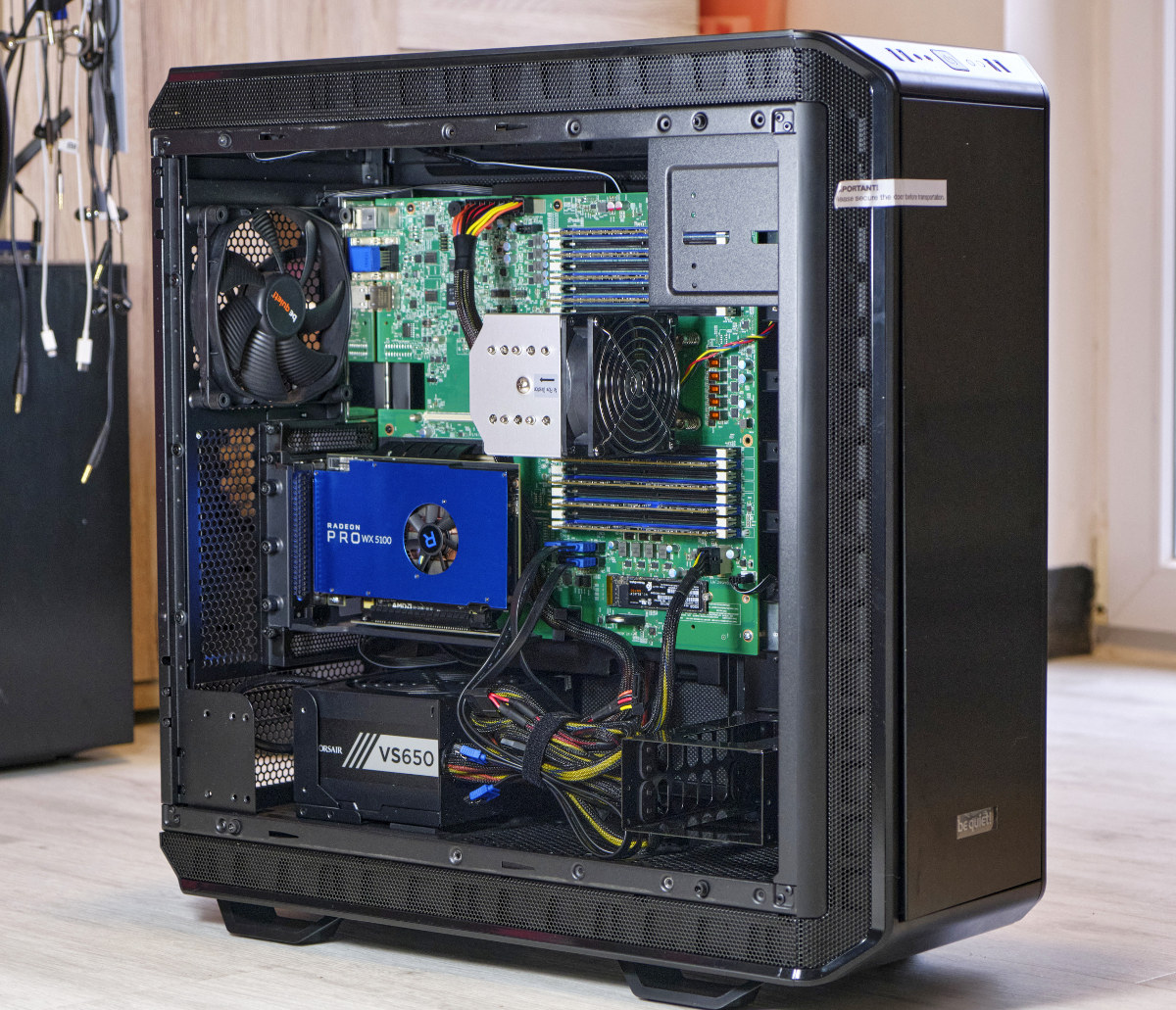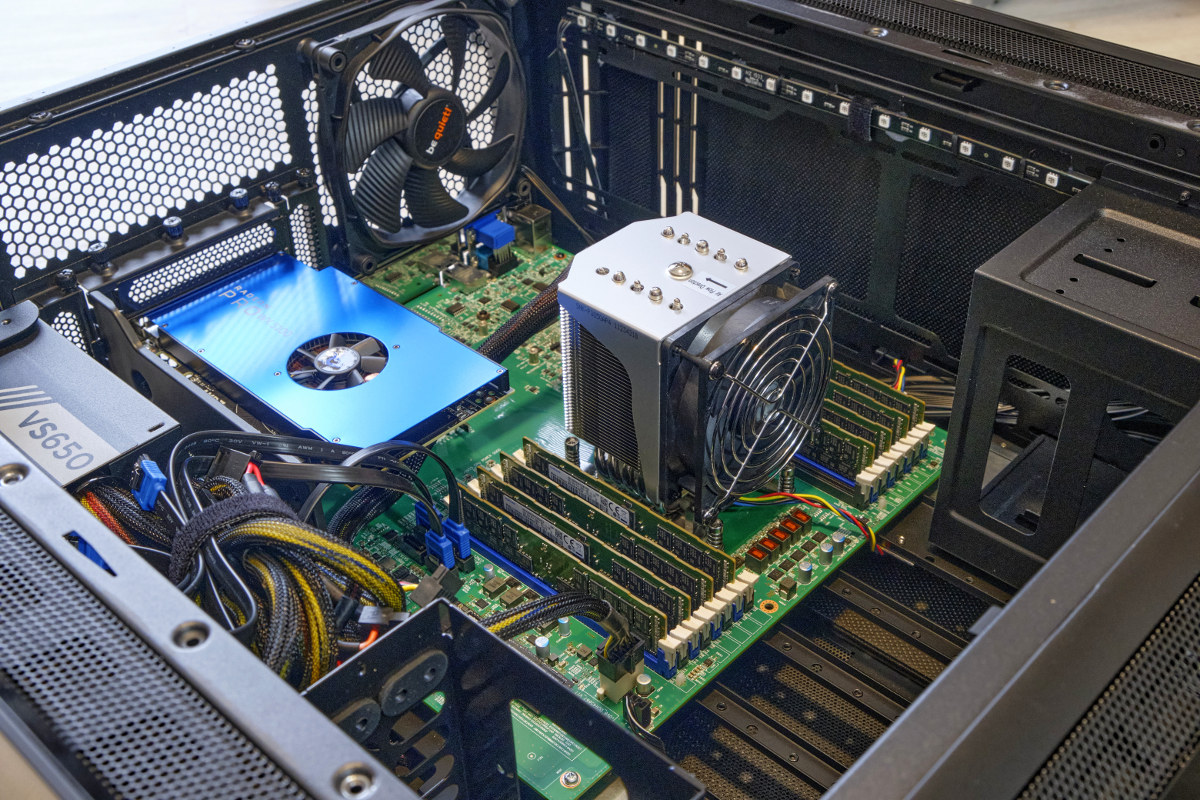Over the last few years, several companies have come up with 64-bit Arm workstation to allow developers to test Arm code natively which may be important to avoid network delays or test applications requiring video or graphics.
Those started to become available in 2018 from the relatively low-end 24-core Cortex-A53 Linaro “Synquacer” Developerbox to the much more powerful (and expensive) GIGABYTE ThunderXStation Workstation powered by up to two 32-core ThunderX2 processors.
In the fall of 2019, SolidRun started to ship HoneyComb LX2K 16-core Arm Workstation motherboard with and NXP LX2160A 16-core Cortex-A72 processor that offers significantly more performance than the Linaro Box at a reasonable price ($750). While reading a recent Anandtech post with photos of an engineering sample, I found out Avantek was also offering the Ampere eMAG 64bit Arm Workstation powered by an Ampere eMAG 8180 32-core server processor.

Ampere eMAG 64-bit Arm workstation specifications:
- SoC – Ampere eMAG 8180 32-core Armv8 processor @ 2.8GHz / 3.3 GHz (Turbo) with 3MB L3 cache; 125W TDP; TSMC 16nm FinFET+
- System Memory – 16x DIMMS 2400/2666 MHz, up to 512GB.
- Storage – 3x SATA3 HDD/SSD, 1x M.2 NVMe PCIe x4 SSD
- Video Output
- VGA built-in
- Optional discrete graphics cards
- AMD FirePro W2100 2GB 2x DP PCIe x16 gen 3
- AMD Radeon Pro WX 5100 8GB DDR5, PCI-E x16, four DisplayPort, 1792 Stream Processors, 3.9 TFLOPS
- Nvidia Quadro GV100 32GB
- Networking
- Gigabit Ethernet (RJ45) via Intel i210 controller
- 1x 10/100M management LAN
- Optional add-in-cards (no details provided)
- USB – 4x USB 2.0 ports
- Serial – 1x Serial RS232
- Expansion – 1 x PCIe Gen3 x16 Slot (8 lanes)
- Misc – AMI AptioV BIOS, Aspeed AST2500 BMC
- Power Supply – Corsair VS650 650Watts power supply
- Dimensions – 577 x 243 x 585 mm

Supported operating systems including Ubuntu, Centos, SUSE SLES Arm developer edition, and openSUSE.
Price starts at $3,391 with the minimum configuration including 32GB DDR4 ECC RAM (4x 8GB), and a 240GB SATA SSD. But from there it also depends on your requirements and budgets, with a maxed-out configuration going for around $25,000.

Jean-Luc started CNX Software in 2010 as a part-time endeavor, before quitting his job as a software engineering manager, and starting to write daily news, and reviews full time later in 2011.
Support CNX Software! Donate via cryptocurrencies, become a Patron on Patreon, or purchase goods on Amazon or Aliexpress




